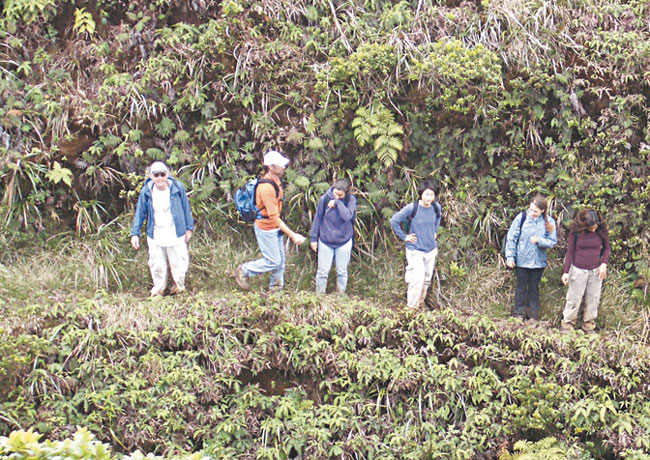Go Take A Hike! But Do It Safely
It’s no secret that one of the best ways to enjoy some of the most breathtaking views of Hawaii is by hiking. It’s an activity that appears to have grown in popularity in recent years.
“We’ve seen a clear increase in outdoor recreation in the last 10 years,” says Aaron Lowe, Oahu trails and access specialist for the state Department of Land & Natural Resource’s Na Ala Hele Trails & Access Program. “With the access of the Internet, it’s definitely been increasing exponentially because there’s more information out there about authorized hikes and unauthorized hikes.”
In addition to being surrounded by the beauty of nature, hiking is a fun way to stay active, and it’s free. But before going on any trail, it’s important to do your research.

Lowe recommends reading Na Ala Hele’s Hiking Safely in Hawaii brochure available at hawaiitrails.org. The website also provides information on 43 authorized Oahu dirt trails and roads open to the public.
Safety tips for hikers include staying on the trail, staying together with your group, avoiding undue risks like climbing waterfalls or following narrow ridgelines, monitoring the weather, and watching the time (allow enough time to return before dark).
According to Lowe, popular trails include Manoa Falls for its short distance to a waterfall (about 0.8 miles one way), and Kuliouou Trail, which is more challenging but has some great views (2.5 miles one way).
He also recommends Poamoho Trail, but you need a permit and fourwheel drive. “You drive six miles before you get to the trail head and then the trail is about 3.5 miles to the summit,” he explains. “It’s just a really well-built, beautiful trail. I consider it probably our best trail.
“The trails on our webpage are maintained for public use, so there are signs and we do hazard mitigation. We actually clear the trails to make it safer for the public to use. Anything that is not Na Ala Hele is an unmaintained trail.”
There also are some trails that are closed to the public but continue to attract a lot of hikers. Last year, 121 citations were given to people for trespassing into Sacred Falls, which closed after a landslide in 1999 killed eight people and injured about 50 others. In an effort to discourage hikers from trespassing into the park, the state DLNR recently released a video called Sacred Falls — Don’t Risk Your Life, a Fine or Jail (vimeo.com/119992399).
In addition to being on an unauthorized trail, Lowe says many times hikers find themselves in trouble because they didn’t plan right or they don’t have the skill level for that particular trail.
If you find yourself in an emergency, Lowe says to stay put, stay visible (wear brightly colored clothing), stay noisy (whistle or yell out for help), and stay warm because there’s a good chance you’ll have to stay overnight.
“Hiking really connects you with nature and I think that’s just a real healthy thing,” he adds. “I try to get more people to get out there and enjoy nature, but it’s really important to do your research first so you can have an enjoyable, safe hike.”





